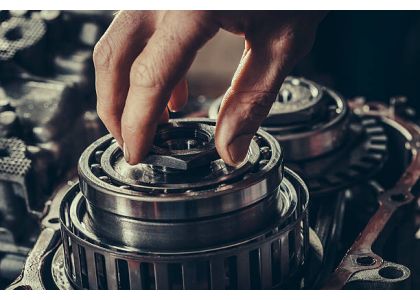INDUSTRY NEWS
The Latest Advancements in Bearing Technology

Introduction:
In the field of machinery and mechanics, bearings play a crucial role in ensuring smooth operation and reducing friction between moving parts. Over the years, significant advancements have been made in bearing technology, enhancing their performance, durability, and efficiency. This article will explore the latest developments in bearing technology and their impact on various industries.
1. Ceramic Bearings:
Ceramic bearings have gained significant popularity in recent years due to their outstanding properties. Made from advanced ceramic materials such as silicon nitride, these bearings exhibit exceptional hardness, corrosion resistance, and superior heat dissipation capabilities. Ceramic bearings are particularly suitable for high-speed applications, such as aerospace and racing industries, where reduced friction and increased reliability are critical.
2. Self-Lubricating Bearings:
Traditional bearings require regular lubrication to maintain optimal performance. However, the need for constant maintenance and potential lubrication leakage has led to the development of self-lubricating bearings. These innovative bearings are manufactured with embedded solid lubricants or coatings, eliminating the need for external lubrication. Self-lubricating bearings not only reduce maintenance costs but also improve operational efficiency in applications where re-lubrication is challenging or inaccessible.
3. Magnetic Bearings:
Magnetic bearings have revolutionized the realm of high-precision machinery and rotating equipment. Instead of relying on physical contact, magnetic bearings employ electromagnetic forces to levitate and stabilize the rotating shaft. The absence of mechanical friction in magnetic bearings reduces wear and tear, eliminates the need for lubrication, and minimizes energy loss, resulting in increased efficiency and reduced operating costs. This technology finds its applications in industries such as power generation, oil and gas, and turbomachinery.
4. Sensor-Integrated Bearings:
The integration of sensors within bearings has transformed conventional bearings into smart components. Sensor-integrated bearings provide real-time monitoring of various parameters such as temperature, vibration, and load. This data helps in predictive maintenance, allowing for timely intervention before any potential failures or breakdowns occur. Industries like automotive, wind energy, and industrial machinery greatly benefit from this technology, as it enables condition-based maintenance, enhances reliability, and extends the lifespan of critical equipment.
5. Composite Bearings:
Composite bearings combine the best properties of different materials to create a high-performance, lightweight, and cost-effective solution. These bearings commonly consist of a polymer matrix reinforced with fibers, such as carbon, glass, or aramid. The use of composite materials in bearing manufacture results in reduced weight, improved corrosion resistance, and increased load-carrying capacity. Composite bearings find applications in industries such as automotive, marine, and aerospace, where weight reduction and performance enhancement are crucial.
Conclusion:
The continuous advancements in bearing technology have significantly impacted various industries, allowing for enhanced machine performance, reduced downtime, and increased cost-effectiveness. From ceramic and self-lubricating bearings to magnetic and sensor-integrated bearings, these innovations have revolutionized the field of machinery and mechanics. As technology continues to evolve, we can expect further advancements in bearing design and materials, leading to even more efficient and reliable solutions in the future.